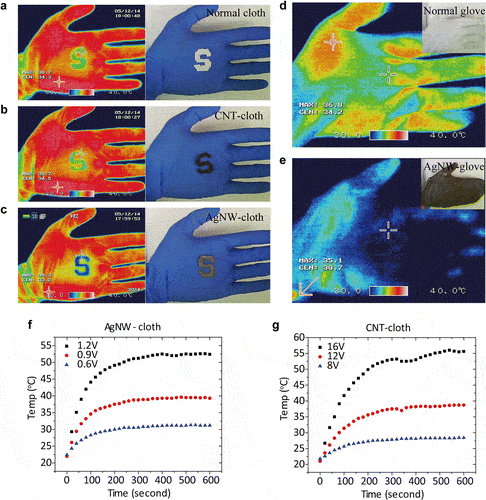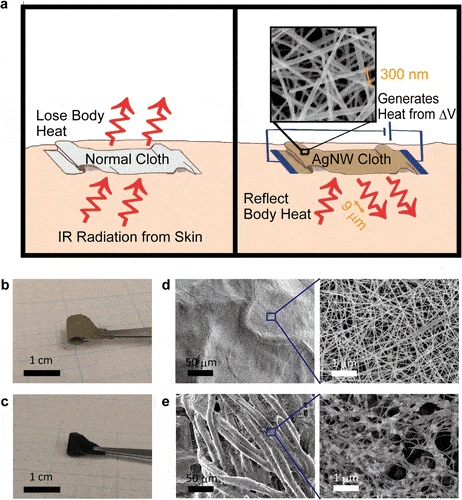Researchers at Stanford University coated flexible textile fibers with metallic nanowires to form a cohesive network that acts as a fantastic thermal insulator. The flexible material, made of silver nanowires and carbon nanotubes, is knitted together so closely that the space between individual strands is smaller than the wavelength of infrared radiation. As such, the radiation emitted by our bodies bounces between the skin and cloth. The space isn’t smaller than the size of water molecules, though, so even though it retains a lot of heat, the fabric is also breathable and dry. Such inventions could prove to be indispensable for expeditions venturing in harsh, freezing environments, as well as regular people battling ever harsher chills. Where it could prove most useful, however, is in the energy sector where the fabric could be used to vastly improve efficiency by patching heat leaks.
A hot glove

The heat radiated by the human body travels at around a wavelength of 9 micrometers. Because the empty spaces between nanowires are controlled through the production process to remain between 200 and 300 nanometers, the radiation can’t pass through making the flexible nanowire cloth a radiation shield. Moreover, not only does the cloth retain heat, it can also be used part of an active heating system. Because of the nanowire’s extraordinary thermal conductivity, just 1 volt of electricity is enough to warm the cloth above body temperature in less than a minute.
“The metallic nanowires form a conductive network that not only is highly thermal insulating because it reflects human body infrared radiation but also allows Joule heating to complement the passive insulation,” the team write in a paper published recently in the journal ACS Nano Letters. “The breathability and durability of the original cloth is not sacrificed because of the nanowires’ porous structure.”

The Stanford scientists didn’t have personal clothing in mind when they embarked on this project, though. The flexible fibers are meant to be integrated in buildings to curve energy consumption lost to heat exchange with the environment. About half of all the energy consumed in the world goes into building for heating, cooling and lighting. In the US, homes and commercial structures space heating and cooling account for 12 percent of all domestic energy consumption. By trapping heat, buildings employing a system similar to the Stanford prototype could save a lot of energy, otherwise lost.
From an environmental point of view, saving energy is also extremely important. About two thirds of the energy consumed in the world comes from fossil fuel, so when energy is saved, greenhouse gas emissions are curbed.
“Metallic nanowire cloth has great potential to reduce the energy used on indoor heating because of its personal thermal management capabilities while retaining the wearability and breathability of normal cloth,” the authors write.






